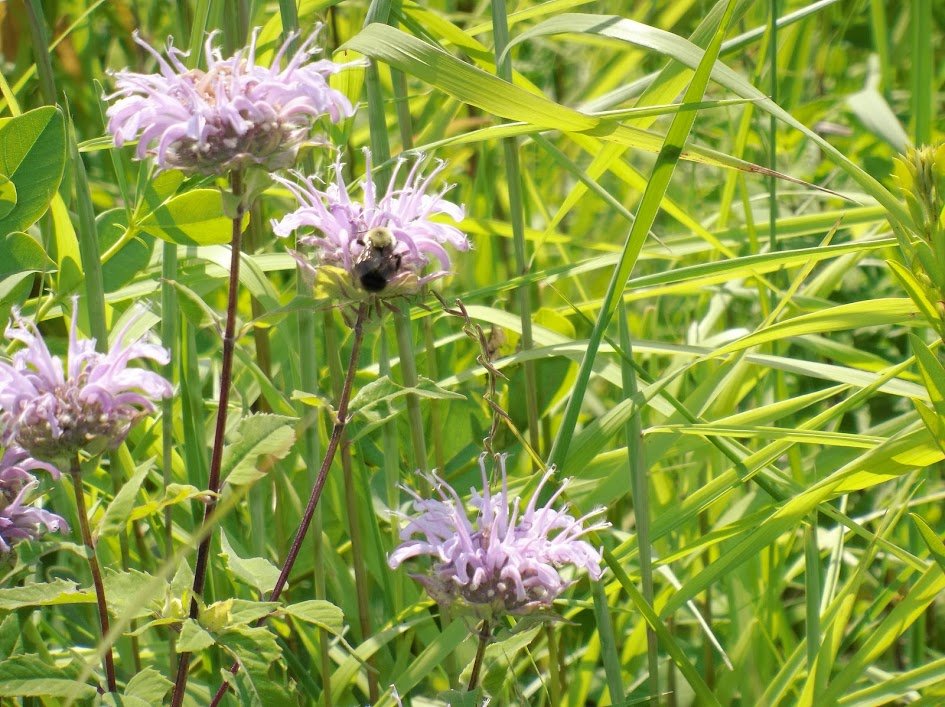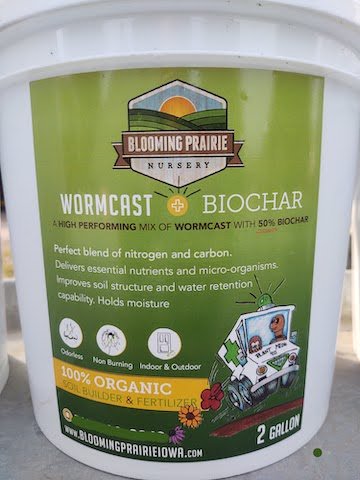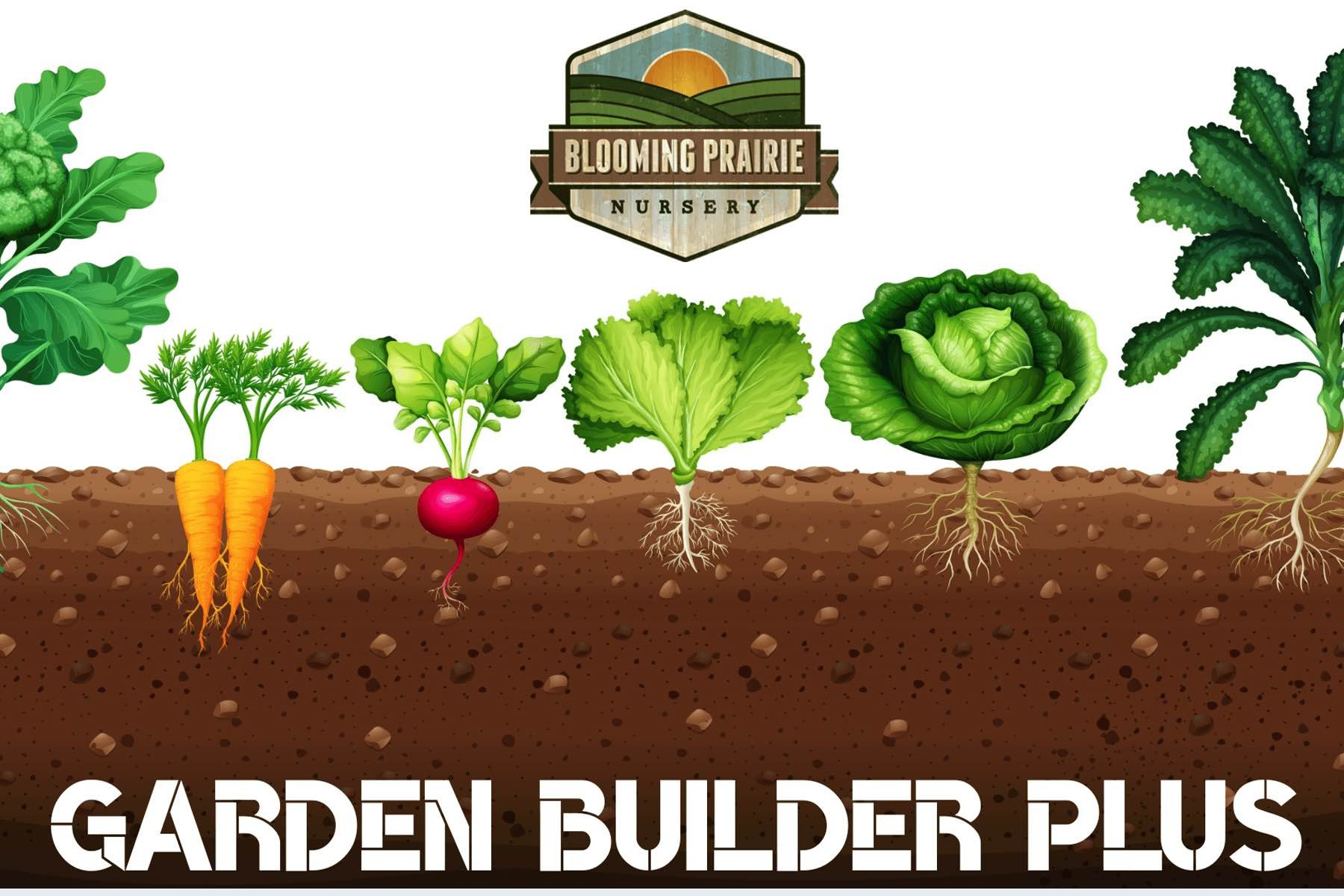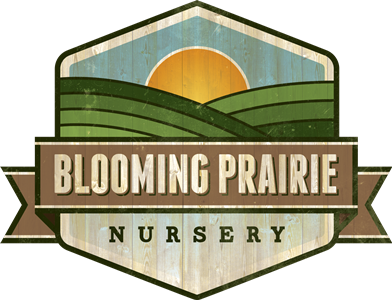
The Blooming Prairie Advantage
Our three soil health products work together to create the Blooming Prairie Advantage
-

A proprietary blend of our worm castings and BioChar.
Optimizes plant health throughout the growing season and provides plants with the vital nutrients as they need it.
Worm castings provide essential nutrients and micro-organisms. BioChar acts as a sponge to store water and nutrients, making plant nutrients available when needed. Its porous structure provides a home for soil microbes, resulting in beneficial interactions between soil and plants.
Foliar Application or Soil Drench
1/4 cup worm castings and BioChar per 1 gallon water for use on annual, perennial, or vegetable gardens
Mix 1 cup worm castings and BioChar per 1 gallon water for use on fruit trees
Also use 1/4 cup for 3 inch pot, 1/2 cup for 1 gallon plant
Before planting put the recommended rates in the holes to provide nutrients in root zone
-

Soil Builder Plus
A mixture of 80 percent compost, 10 percent BioChar and 10 percent worm castings.
Natural soil enhancement designed to optimize plant growth and soil health.
Top Dress Application
Top dress or apply to 3/4 inch thick application across entire garden surface prior to planting
Designed to provide nutrients for seedlings to germinate
Or use 1 cup per 3 inch pot or 2 cups per 1 gallon plant when planting (add when back-filling the holes) to provide nutrients in root zone
One 30lbs. bag covers 10sq. Ft @ 3/4″
-

Garden Builder Plus
A mixture of 60 percent compost, 20 percent BioChar and 20 percent worm castings.
Optimizes plant health throughout the growing season and provides plants with the vital nutrients as they need it.
Top Dress Application
Top dress or apply to 3/4 inch thick over and around existing perennials.
Use on fruit trees, shrubs, vegetable gardens and fruits like raspberry bushes, and more.
One 30lbs. bag covers 10sq. Ft @ 3/4″
The Problem with Iowa Soil
Information from “The World Beneath Your Feet,” A closer look at soil and roots. Authored by Mark Miller and funded by the Iowa Living Roadway Trust Fund.
Much of Iowa’s rich prairie soil have been lost through erosion since they were plowed. Today prairie soils have less organic matter and are unable to infiltrate significant rainfall. This leads to more runoff, water-quality problems and flooding.
Soil Profiles
“The top part of the soil profile is called the organic layer. It is made up of plant material in various stages of decay. Soil scientists call this layer the O horizon. The A horizon lies below and is referred to as topsoil. This layer is enriched with organic material from the O horizon above. Biological activities in the topsoils mix the organic material with sand, silt, and clay. This mixture is called humus. It is usually dark in color and roots are concentrated here. Topsoil is the most fertile and active layer of the soil.
The B horizon or subsoil has less organic matter and less biological activity but is important as a nutrient and water reserve. It has less pore space and the A horizon and contains more clay. Subsoil often contains iron oxide giving it a reddish-brown color.
The C horizon is chunky with partly weathered, unconsolidated rocks – like glacial till. There is no organic matter or biological activity at this level. In mature soils, the C horizon extends down many feet all the way to the underlying bedrock which is the R horizon.”
In many of our neighborhoods, urban and rural, we have virtually lost these vital layers of the organic layer of soil, both the O and the A.
Soil Ecology
“An ecosystem is a community of living creatures interacting their nonliving environment. Ecology is the study of ecosystems. Healthy coils are home to thousands of different species of living organisms. Even though soil ecosystems require a microscope or a magnifying glass to be fully appreciated, they are just as wild and dynamic as the early observed ones on the surface.”
“Predators and prey, life and death, sex, chemistry, deceit, disease, cooperative, warfare and magic exist right below your feet. You will only find functioning ecosystems in soils with adequate pore space. Just like plants, soil creatives need air and water to thrive.”
Soil Food Web
“Plants shed leaves, stems and roots that the primary consumers feed on and break down to create humus. The activities of all the consumers serve to create a nutrient-rich topsoil with excellent texture and structure that sustains the consumers well.”
Blooming Prairie Nursery is actively working to rebuild our ecosystem.
The beauty of a perennial system like the tall grass prairie is that it continually recycles nutrients and builds more soil every year instead of losing it.
Roots are a plant’s anchor and supply pipes. The root system of a prairie plant may make up to 70% of the weight of the plant. Roots grow down and out in search of food and water to send up to the vegetative part of the plant. Some individual prairie plants and their roots can be hundreds of years old – some go down 25 feet or more. These deep roots create excellent pore space, allowing even heavy rains to infiltrate the soil without runoff. Prairies did not suffer from erosion.
The Tall Grass Prairie Center has an exhibit demonstrating how deep prairie roots can grow.



